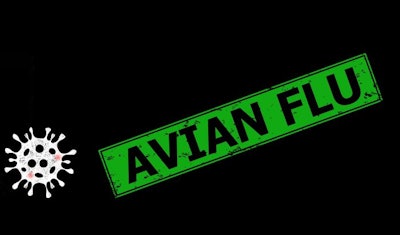
Use disposable shoe coverings, deprive wild birds of food and water sources and throw away waste to keep avian influenza off the farm.
As part of the Latin American Poultry Summit in Atlanta on January 23, 2023, Dr. Claudia Osorio, an associate advisor with Elanco Animal Health USA Inc. professional veterinary services, provided an overview of the highly pathogenic avian influenza situation in North America. The event took place ahead of the 2023 International Production & Processing Expo.
HPAI: a global outbreak
The highly pathogenic avian influenza (HPAI) outbreak in North America is, arguably, part of an on-going outbreak of Eurasian H5N strains of avian flu dating back to 1996.
The actual avian influenza virus is common in birds and nearly impossible to remove from the environment. Typically, it is of low pathogenicity but small mutations lead to a virus that is much more fatal to birds and potentially other species.
There are many avian influenzas, but the pathogenic H5N strains continue to be the most problematic and concerning for animal and human health. Since the original outbreak in Guangdong, China, migratory birds, commercially farmed birds and small-scale flocks continually cycle mutating viruses resulting in outbreaks around the world.
The H5N1 virus continues to circulate in North America and beyond, propelled by more than a hundred species of wild birds with wide ranges.
Stopping transmission
The 2022 outbreak is much different than the 2014-2015 outbreak in North America in the way its spreading.
This time, according to current epidemiological reports, more than 85% of individual outbreaks were caused by wild birds. In the 2014-2015 outbreak, 85% of transmission was caused by lateral transmission, or people carrying the disease from farm to farm with contaminated equipment, clothing or footwear.
Moreover, current evidence suggests between 40 to 50% of wild, aquatic birds in North America are carrying the disease.
Osorio said this suggests something different must be done to counteract the disease.
1. Use shoe coverings
Farmers and staff are obviously carrying the disease into the house unwittingly, which suggests footbaths and other measures are not effectively removing pathogens from footwear.
Ideally, farms would use a Danish entrance with separate footwear and clothing for each poultry house. In reality, it’s not practical for growers with multiple barns and technical staff traveling around the region to follow such a practice. A mandatory, disposable shoe covering can cheaply, simply solve this problem.
2. Repel and avoid wild birds
Osorio said it’s much more effective to eliminate the sources of attraction for wild birds than to respond to an active wild bird presence.
Wild birds are attracted to standing water near poultry houses, feed storage, mortality, used litter, trash and other food sources. They will nest in eaves and under roofs of poultry houses and otherwise linger near poultry facilities potentially spreading the disease with droppings or carcasses.
Growers can minimize potential exposure by recognizing and managing potential risk sources. Houses should have short eaves and no cantilevers to avoid giving birds places to nest. Avoid power cables. Inspect roof vents and other ventilation for wild bird nesting.
Using predator sounds, bird spikes, and grating as well as limiting vegetation near the poultry house are effective. Using scarecrows and stuffed coyotes are not, she said.
Furthermore, common maintenance and covering any hole, opening or burrow that shouldn’t be there will frustrate wild birds, as will using gravel to fill tunnels and other holes near the base of the house.
Finally, eliminating standing water is essential to avoiding wild bird activity. Areas where water stands for more than 48 hours should be filled. Eliminate vegetation on the banks of natural and man-made bodies of water, as well as ditches and streams, near the farm.
Poultry installations near bodies of water must take care that its staff never walk near bodies of water where wild waterfowl live. Poultry equipment should never touch water used by wild birds and this water should never be used on the farm for any purpose.
3.Throw away the trash
Wild birds are attracted to trash, especially the kind they will find on the farm full of potential food sources. Always be on the lookout for wild bird activity near waste areas.
The most common methods to dispose of waste are incineration, composting and dumpsters. Freezers are viable temporary storage places for mortality and other trash.
Before its disposed or used, keep mortality, litter, feed, silage, compost and other piles with organic material in them on the farm covered with a tarp. Latch containers, dumpsters and trash cans closed.
















